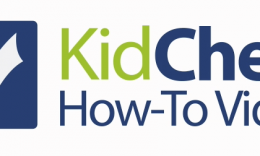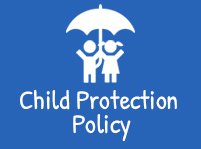What To Do If A Team Member Tests Positive For COVID-19

Leaders from all types of child and youth-focused organizations are currently working with different scenarios around COVID-19 and trying to gain a footing. Activities such as creating reopening plans, understanding effective germ management, and identifying ways to social distance during child check-in and out are scenarios many never imagined they’d face. A situation that continues to be top of mind is what to do if a team member tests positive for COVID-19.
What steps should leaders take when a team member shares they have tested positive for COVID-19? You’ll have to act fast yet continue to display compassion and sympathy. Here are five ways to approach the situation whether your team is working remotely or onsite.
1. The First Step – Show Sympathy: Whether working remotely or onsite, when a team member communicates they have tested positive for COVID-19, it’s vital to display compassion and sympathy. Let them openly share their feelings and make sure to express your support. Whether they are showing symptoms or not, most likely, they will feel anxious about the days ahead, as well as concerned they may have spread the virus to family or coworkers. Share you understand what they are facing and that they might miss some work. Plan for responsibilities to be covered, to help keep productivity steady.
2. Act Quickly: With high-stakes challenges such as COVID-19, time is of the essence. You must act quickly to minimize the spread of disease. Follow any protocols you have in place, as well as immediately ask the person to identify any team members they have come into “close contact” with in the last two weeks. The CDC defines, “close contact” as “a person that has been within six feet of the infected person for a prolonged period of time.” If everyone has been working remotely, it’s unlikely they’ve had any contact, but ask to be sure. If they have been in direct contact with other team members, you should inform the team immediately, direct them to advice from the CDC site, and encourage them to contact their doctors.
Regarding confidentiality established under federal law, you should not disclose the name of a COVID-19 positive person to other coworkers. Provide facts, direction, and support but keep the identity of those infected secure.
If teams are working onsite, implementing a temperature screening program with questionnaires, a cleaning and disinfection schedule, complimentary PPE, are all excellent choices to help mitigate risk.
3. Debrief the Team: When communicating with close contacts of the COVID-19 positive person, it’s helpful to alert them by text, phone, email, or video. These are time-sensitive matters, so reaching out quickly is critical. Make sure your message is consistent, and if you’re communicating via email, put in the subject line “important action required.”
Keep in mind people may be nervous and have a lot of questions, especially if this is their first time being contacted about potential exposure. It’s best not to speculate. You’re not a medical doctor, instead, refer people to their physician and the CDC website.
4. Communicate with Families: Quickly sharing a positive COVID-19 result and what you are doing to minimize the risk of spread with families and members whose children have come into contact with the individual is equally as important as communicating with internal team members, volunteers, and leadership.
It’s imperative to prioritize relevant information specific to what families need. Your communication should include details such as dates for a temporary shut down and reopening, extensions on memberships, changes to personnel or a class schedule, new PPE requirements for children, or process changes, and locations for drop off and pick up.
Families and members understand with exposure to COVID-19 it’s no longer business as usual. Providing the information they need to make ongoing decisions is essential for building trust and gaining a patron for life.
5. Follow Up: More than likely, those who have received the news of potential exposure will have additional questions as time passes. These situations could possibly overwhelm people, and they won’t hear all the details the first time they are shared, so plan to check in. Transparency will calm people’s concerns and demonstrate your organization’s commitment to treating people well. Following up is always a good practice as it shows organizational support, eliminates angst and provides a good record of the process.
Don’t be afraid to ask senior leaders to help with the follow up of individuals who have tested positive for COVID-19. It is a kind gesture during these unprecedented times and is appreciated.
Leadership is Vital:
These are unique times. As a leader, you play a critical role in helping your organization to recover, and part of your job is to reassure those you lead that when an employee reports a positive COVID-19 diagnosis there is an effective and rapid response that supports the individual and works to get them back as soon as they are able.
Click here to receive additional information on COVID-19 resources by subscribing to the KidCheck blog or join our growing social community on Facebook, Twitter, Instagram, and Pinterest.
Click here to schedule a free, personalized product demo to see firsthand the benefits of your organization using secure children’s check-in.


